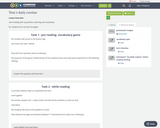
start reading with my partners, learning new vocabulary.for students from A2 level of english
- Subject:
- Reading Foundation Skills
- Material Type:
- Lesson Plan
- Author:
- claudia lavao
- Date Added:
- 03/21/2018

start reading with my partners, learning new vocabulary.for students from A2 level of english
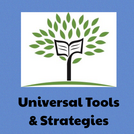
Comprehensive literacy instruction for all students requires the use of tools and strategies that make the instruction accessible. The Unlocking Literacy for Students with Disabilities Modules will build on what you already know about literacy instruction by demonstrating how strategic tools or strategies can make literacy instruction accessible to students with complex communication needs and physical disabilities. Best practices and research-based strategies for literacy instruction, as well as K-2 English Language Arts (ELA) Common Core State Standards (CCSS), will be included throughout all modules. Universal Strategies & Technology ToolsModule 1 will equip educators and parents with foundational tools and universal strategies to improve literacy instruction for students with complex communication needs and physical disabilities. The foundational tools and strategies will be applied within subsequent Unlocking Literacy modules.
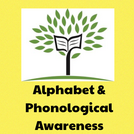
This module focuses on best practices for instruction on alphabet knowledge and phonological awareness. Explicit Instruction and the Cycle Approach to teaching letters and sounds are highlighted. Instructional strategies and tools to extend literacy instruction to students with complex communication needs and physical disabilities are discussed. English Language Art Common Core Standards are provided, along with research on instructional strategies to address the standards.
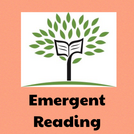
An emergent reader is a young child who is in the early stages of learning to read. They are developing foundational reading skills and becoming aware of how written language works. Emergent readers rely on visual cues, context, and basic letter-sound knowledge to make sense of the text as they gradually build their reading abilities. Emergent reading is defined as all of the behaviors and understandings of learners of any age that precede and develop into conventional reading. (Koppenhaver, Coleman, Kalman & Yoider 1991; Sulzby, 1985)Emergent reading strategies include providing opportunities for shared reading, self-selected reading, accessing various types of text, and building background knowledge. What if a student cannot hold a book and turn the pages of a book? What if a student is non-speaking, how will they participate in reading experiences? This module provides ideas for removing these barriers to provide rich emergent reading experiences for ALL students.

This seminar will help you understand how to use text features to reach a mastery level of understanding of an article, text, or other printed item. You will be looking at effective ways to gather information or data from text features, as well as the importance of their accuracy, which are to important “habits of mind.” You will also have the opportunity to create, watch, and read materials that will deepen your understanding of text features, and how they improve comprehension for you the reader.StandardsCC.1.2.3.GUse information gained from text features to demonstrate understanding of a text.
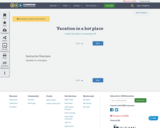
Vacation in a hot place

This lecture introduces figurative language or "figures of speech"--including metaphor, simile, and personification--and provides examples of their use in everyday, literary, and academic writing. The lecture is offered here in three different formats: video with captions, video without captions, and a text transcript.

This lecture defines and distinguishes between abstract and concrete language, explaining how to use both effectively in composition.

This Learning Plan was created by Mae Clausen. Educators worked with coaches to create Learning Plans.Brief Overview: Students will analyze and evaluate the comphrension strategy of visualization to clarify text and deepen understanding of the text. Students will use background knowledge to build on new knowledge and connect to the texts. Grade Level: 3rd gradeLexile Level: 420-820 Scarecrow Read Aloud: AD 600LNDE Standards: LA 3.1.6.l Build background knowledge and activate prior knowledge to identify text-to- self, text-to-text, and text-to-world connections before, during, and after reading.LA 3.1.6.n Make and confirm/modify predictions and inferences before, during, and after reading literary, informational, digital text, and/or media.Learning Objective: Students will be able to define visualization and notice it while reading and/or listening to books or short passages. Duration: 90-120 minutes to complete.

This Learning Plan was created by Mae Clausen. Educators worked with coaches to create Learning Plans.Brief Overview: Students will analyze and evaluate the comphrension strategy of visualization to clarify text and deepen understanding of the text. Students will use background knowledge to build on new knowledge and connect to the texts. Grade Level: 3rd gradeLexile Level: 420-820 Scarecrow Read Aloud: AD 600LNDE Standards: LA 3.1.6.l Build background knowledge and activate prior knowledge to identify text-to- self, text-to-text, and text-to-world connections before, during, and after reading.LA 3.1.6.n Make and confirm/modify predictions and inferences before, during, and after reading literary, informational, digital text, and/or media.Learning Objective: Students will be able to define visualization and notice it while reading and/or listening to books or short passages. Duration: 90-120 minutes to complete.
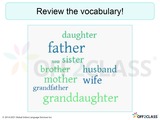
Vocabulary – FamilyThis is an introductory lesson, but would also make a great review lesson for students of all ages and levels. If your students are advanced, use it along with the speaking lesson plan My Family. In this lesson, your students will learn vocabulary related to immediate family members (mother, father, brother, sister, etc) and practice reading simple family trees. After completing this lesson, your students will gain knowledge and you will learn more about them!If you want additional lesson plans and support, including teachers’ notes, be sure to register for a free Off2Class account.
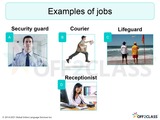
Vocabulary – JobsIn this lesson, students can practice talking about vocabulary related to jobs, where jobs are performed, and tools. Employed students or those looking for work will really enjoy this lesson! After teaching this lesson, check out our lesson plan A Day at the Office, and allow students to put this new vocabulary to use.If you want additional lesson plans and support, including teachers’ notes, be sure to register for a free Off2Class account.
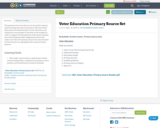
The primary sources in this set can
be used for inquiry-based learning exercises
and projects. Each document falls under the
umbrella topic of voter education, and students
are encouraged to annotate in the margins in order
to support the development of document analysis
and critical thinking skills. Suggested projects that
make use of this set’s primary sources are also
included for the educator as a springboard for
research-based projects.
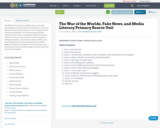
The following unit offers multiple entry points into developing an understanding of media literacy. The unit framework and primary sources can be integrated into classrooms of grades 4-12. Each lesson has student objectives that can be accomplished within 40 minute periods over the course of several weeks. A midpoint writing assessment, whole class capstone debate, and final independent writing assessment are included. Support materials are integrated into the lessons, and the primary source document pages can be found at the end of the unit guide.
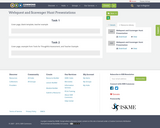
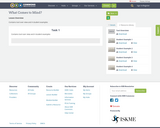
Contains tool over view and 4 student examples
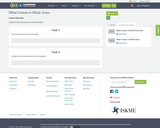
Contains tool overview and chart example
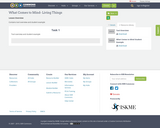
Contains tool overview and student example

Do you need to teach -dge? I, personally, could never find any good resources on teaching this tricky, yet necessary, phonics trigraph. This lesson should take approximately 2-3 sessions. The design is compatible with small group, Station Rotation, or whole class instruction. I've tried to provide enough options to make this lesson adaptable to a blended learning setting, so you can do it F2F or digitally.

Engage students in the analysis of the persuasive written language of advertisements. Students will have to recognize some language techniques used in advertising, match the techniques to some printed ads and create slogans, using such techniques.Subject: English Language, Reading Foundational Skills, Writing Foundational SkillsLevel: Middle SchoolMaterial Type: Classroom ActivityRemixed by Tami Hughson, Sioux County Schools.